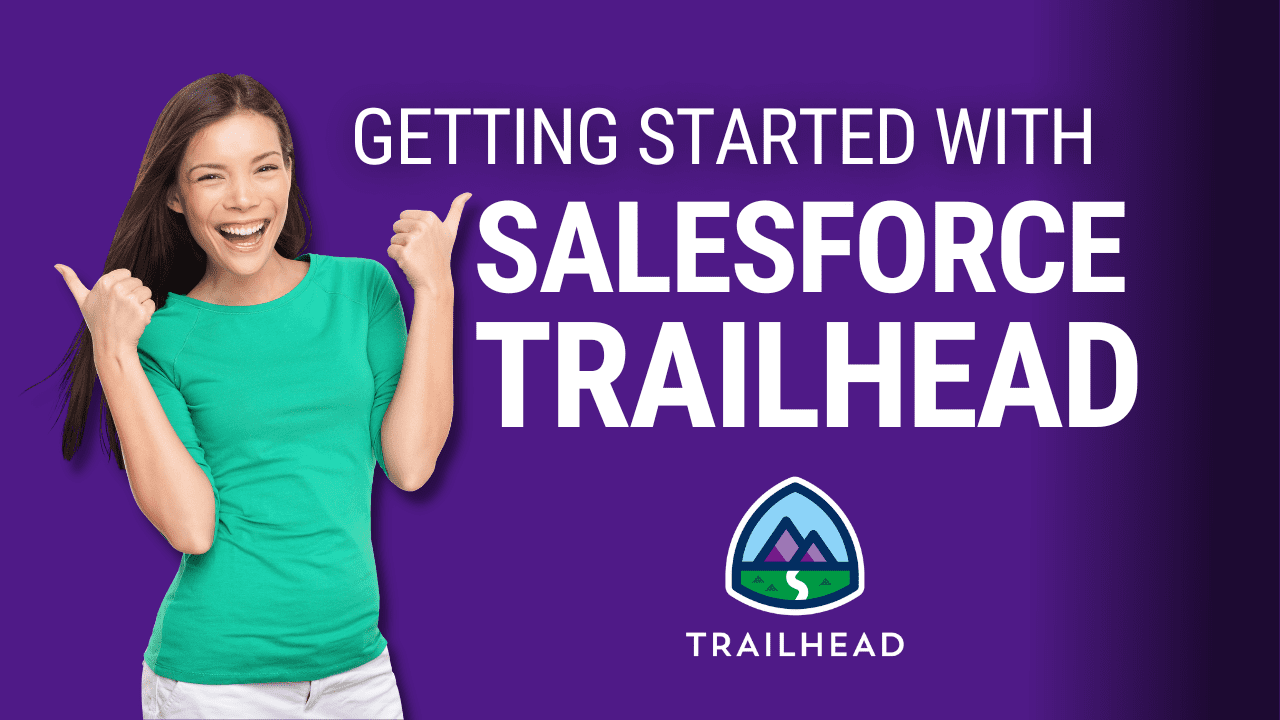How to Create an Impactful Salesforce Training Curriculum

Introduction
As a business leader, you know how essential it is to have an effective and efficient Salesforce training curriculum for your end users. With the ever-changing nature of technology and digital solutions, providing your employees with the right skills and knowledge to use Salesforce efficiently can be challenging.
However, a well-designed Salesforce training curriculum can help ensure your organization gets the most out of its Salesforce investment.
This blog post will answer some of the most common questions business leaders, and Salesforce Admins have when creating an impactful Salesforce training curriculum for their end users.
We’ll explain why it’s essential to train employees in sales and marketing on using Salesforce as business users, how it will help the company get the most out of its Salesforce investment, and how to create a comprehensive learning program.
With up-to-date information and processes surrounding using Salesforce within their organization, employees will be better equipped to utilize all aspects of this powerful CRM platform confidently.
We’ll also discuss the benefits of properly training employees using Salesforce, such as improved data quality, higher adoption rates, and greater overall productivity. Finally, we’ll provide tips on how to create an effective training strategy that meets the specific needs of your company’s departments.
By exploring these topics in more detail, business leaders will gain critical insights into what it takes to set up a successful Salesforce training program for their end users.
With this knowledge, they can better equip their teams with the skills needed to maximize their performance within the platform while achieving greater operational efficiency throughout their organization.
🔥 SUBSCRIBE! 🔥

Get practical Salesforce advice in your inbox!
Feeling overwhelmed by everything you have to do as a Salesforce Admin?
I know how it feels.
I created the FREE Brainiate Newsletter – to help you stay up-to-date with the latest Salesforce news, advice, and product recommendations.
Sign up for my newsletter and get all that information right in your inbox – without having to search for it yourself. You’ll be able to focus on your projects with peace of mind, knowing you’re always up-to-date on the latest Salesforce updates.
Click the button below and sign up for my FREE Brainiate Newsletter today!

How Does Salesforce Training Impact an Employee’s Performance?
Salesforce training has a profound effect on an employee’s performance. By properly training employees to use Salesforce, they can use the software and its capabilities, improving efficiency, accuracy, and productivity.
Properly trained employees are better equipped to handle sales, customer service, and customer interaction. They can quickly access the data they need to provide customers with accurate information and complete orders quickly.
Furthermore, having a comprehensive Salesforce training program allows employees to get familiar with the software’s features quickly and understand how it works. They gain confidence when using Salesforce, enabling them to work faster without making costly mistakes.
Moreover, with a proper understanding of the system, employees can be creative in finding ways in which Salesforce can help them do their job better; for example, by utilizing automation or customizing reports and dashboards for their requirements.
With good training comes mastery of the system, which leads to higher user adoption rates from employees who have learned how to use the system effectively and quickly find any information they need within the system.
This ultimately leads to greater user satisfaction with Salesforce because users can get their jobs done efficiently without spending too much time searching through multiple data fields or forms. High user adoption rates also lead to improved data quality since users know precisely where each piece of data is stored and how it should be updated or edited if needed.
Finally, by investing in Salesforce training for your employees, you reap multiple benefits such as:
- increased efficiency due to an improved understanding of the system;
- lower costs due to decreased errors associated with misused or incorrectly entered data;
- higher user adoption rates resulting in greater customer satisfaction;
- improved analytics due to quick access to accurate data; and
- better decision-making from management because they have a better idea of what is happening within their organization.
What Types of Training Are Most Effective in Teaching Business Users How to Get the Most Out of Salesforce?
When teaching business users how to get the most out of Salesforce, the most effective training typically involves a combination of methods tailored to the organization’s specific needs.
These methods include formal and informal approaches, such as instructor-led courses, on-the-job training, and self-paced instructions.
Formal instruction is often seen as the best way to ensure employees learn all the necessary skills to use Salesforce effectively. This instruction generally includes a series of lectures or seminars given by experts in their respective fields.
By investing in quality instructors and providing appropriate hours for learning, companies can ensure their employees are well-versed in using Salesforce correctly.
On-the-job training is another popular option for helping business users become proficient with Salesforce. This type of training allows employees to learn from more experienced staff who have already mastered basic tasks associated with using the system.
Companies may also pair new hires with current staff members who can provide direct assistance when more difficult tasks arise. Organizations need to provide sufficient guidance throughout this process so that employees understand why specific procedures are followed and what outcomes are expected.
Finally, self-paced instruction offers a flexible solution for teaching business users how to use Salesforce without investing too much time or money into formal classes or one-on-one interactions with staff members.
Organizations can create video tutorials or online modules which contain step-by-step instructions that individuals can follow at their own pace. In addition, webinars and other educational resources can be created for your organization, covering various aspects of Salesforce usage, which can be taken advantage of by any employee wishing further to sharpen his or her skills with the system.
In conclusion, there are several different types of training available that organizations should consider when creating curriculums for developing their business users’ understanding and proficiency with Salesforce usage.
From formal instruction provided by experienced professionals to self-paced online modules, companies can find options that suit their unique needs while ensuring employees gain valuable insight into how to use this powerful platform efficiently.
What Is the Difference Between On-The-Job Training and Off-The-Job Training?
On-the-job training is the type of employee training that occurs while employees are performing their regular job duties. It can include instruction, guidance, and mentoring from supervisors and more experienced colleagues.
This type of training is conducted in a natural workplace setting, with employees engaging in familiar tasks while being taught the necessary skills to complete those tasks. On-the-job training is tailored to specific job roles and provides immediate feedback to employees as they learn new skills or enhance existing ones.
Off-the-job training is any employee training that takes place away from the workplace. It’s often conducted in a classroom setting, or it may involve independent study on the part of the employee.
Off-the-job training tends to focus on more general topics, such as communication skills, leadership development, and computer literacy; these are not necessarily job role specific. Because off-the-job training does not occur in a work environment, participations don’t receive immediate feedback about how they’re doing; instead, results are often measured after the completion of the program.
Both on-the-job and off-the-job training can be beneficial for different reasons. On-the-job trainings provide employees personalized instruction within their particular job roles, which helps them become more efficient and accurate at their tasks.
Off-the-job training offers a broader scope of learning that assists employees in developing leadership skills and other professional behaviors that will help them succeed in their current organization or prepare them for advancement into higher positions elsewhere.
What Are Some Benefits of Training Employees on Using Salesforce?
There are several key benefits that a company can gain from investing in training their employees on how to use Salesforce. For starters, properly trained employees will better understand the capabilities of Salesforce and how to get the most out of it. Being able to maximize its potential will benefit both the individual employee and the organization as a whole.
Another benefit of training employees on Salesforce is employee efficiency in day-to-day tasks. By providing proper training, companies can ensure that employees are well-equipped with the knowledge needed to utilize Salesforce properly for all their tasks throughout the day. This can reduce time spent on mundane activities, resulting in a more productive workforce overall.
Furthermore, companies can improve data quality and accuracy across all departments by having well-trained employees utilizing Salesforce within the organization.
This ensures that all information stored within Salesforce is reliable and up-to-date, essential for making informed decisions about business strategy moving forward. Additionally, having accurate data helps with compliance when dealing with regulatory bodies or industry standards.
Finally, having an effective curriculum in place for training employees on using Salesforce also helps with user adoption and retention rate within an organization.
The more comfortable users feel with using the tools available within the platform, the more likely they are to adopt them fully into their daily lives. Furthermore, this increases employee satisfaction, which has been shown to impact retention rates and job performance metrics directly.
What Are Some Challenges of Training Employees on Salesforce?
One of the challenges of training employees on Salesforce is that it is a complex and sophisticated platform. With its multiple functions, users may find it difficult to customize their Salesforce environment to meet their specific needs. This challenge can be incredibly daunting for new users unfamiliar with the platform’s capabilities. Another challenge is that Salesforce requires a certain level of technical proficiency to use it effectively, and many potential users may lack the necessary skills to do so. Additionally, some businesses may not have the resources or personnel to properly train their employees, making it difficult for them to utilize the platform correctly.
A third challenge associated with training employees on Salesforce is ensuring the platform’s adoption by those receiving the training. All users must become proficient in using the platform’s features, but this task can be difficult if they don’t have enough motivation or enthusiasm for Salesforce.
Furthermore, providing adequate support and feedback during and after training can help ensure that users can successfully use Salesforce without becoming overwhelmed or confused by its complexity.
Lastly, businesses need to make sure that any changes made to their Salesforce environment are communicated clearly and effectively so that everyone has an up-to-date understanding of how things work.
In summary, while there are many benefits associated with training employees on Salesforce, there are also several challenges that organizations must take into account before rolling out such a program.
Companies should consider allocating time and resources towards creating comprehensive training courses and providing ongoing support to ensure their employees’ successful adoption and utilization of the platform.
Additionally, businesses should strive to foster a positive attitude towards learning new technology within their organization, which often leads to higher engagement and better user outcomes.
How Can My Employees Get the Most Out of Their Salesforce Training?
To ensure that your employees get the most out of their Salesforce training, there are several steps you can take. First, it’s essential to have clear objectives and goals before beginning the exercise. This will help ensure that your employees understand what they need to learn and that they can focus on the areas most important for their particular roles.
Additionally, it’s also important to customize the training for each employee to meet their individual needs and experience levels. This will help ensure that every employee receives the best possible training.
Once you’ve established your objectives and customized the curriculum for each employee, the next step is to provide a practical learning experience for employees during training sessions. Here, it’s essential to ensure employees understand why they’re receiving Salesforce training instead of memorizing technical information.
Additionally, instructors should be knowledgeable about Salesforce topics and be able to provide explanations in a way that resonates with all learners.
It’s also a good idea to set up additional opportunities for employees to practice what they’ve learned outside of classroom settings. This could include providing hands-on learning experiences or creating projects where teams of employees work together on tasks related to Salesforce usage.
By giving employees time away from formal instruction and allowing them to practice in different contexts, they’ll be more likely to remember what they’ve learned and apply it when needed.
Finally, ongoing support is essential after initial Salesforce training has been completed. Here, companies should ensure that their customer success team is available whenever necessary to answer questions or troubleshoot problems by using Salesforce tools as end-users need.
Additionally, companies may consider setting up regular refresher courses or workshops on how best to use Salesforce for specific tasks or purposes, helping keep users up-to-date on new features and functionality and ensuring continued engagement with Salesforce over time.
How Do I Know if My Employees Are Ready for Salesforce Training?
Knowing if your employees are ready for Salesforce training is an essential first step in any successful Salesforce implementation. Critical indicators can help determine if your team is prepared for the training.
First, look at the experience level of each employee. Salesforce is a highly customizable tool, and its complexity increases with the degree of customization. Therefore, it’s essential to evaluate each employee’s technical aptitude and match them up with appropriate training courses.
If your team has no prior experience with Salesforce, more foundational courses may be available to ensure they have a strong understanding of the basics before progressing further.
Secondly, identify areas where the team may need additional support outside regular training sessions. For example, some employees may require hands-on coaching or more frequent check-ins than others to understand and apply their learning fully.
This can help tailor the training curriculum accordingly so everyone receives the proper instruction and support needed to reach their goals as quickly as possible.
Another important indicator is how comfortable each employee is using technology tools and technologies, not just Salesforce. This can help inform what type of training they need most – online tutorials, virtual workshops, or one-on-one sessions – so they can best leverage all the features Salesforce offers.
Finally, take the time to assess how motivated each employee is about learning about new features or processes in Salesforce. If people seem hesitant or lack genuine enthusiasm for learning something new, keeping them engaged during formal instruction could be challenging.
Thus it’s essential to take stock of everyone’s attitude towards mastering new tools before jumping into any deep technical training coursework – because without this underlying motivation, many students will struggle to retain their lessons effectively and benefit from them in any meaningful way over time.
What Are Some Signs That an Employee Is Not Doing Well in Salesforce Training?
When employees are not doing well during Salesforce training, some signs can help identify their areas of difficulty. One sign is a lack of engagement while they are being trained.
If they appear distracted or disinterested, it could indicate that they’re not absorbing the presented material. They may also ask questions that indicate confusion or misunderstanding of the concepts and processes being taught.
Another sign is if the employee has difficulty following directions or grasping complex concepts. Suppose they have trouble completing tasks such as creating a workflow, data entry, or setting up reports. This could indicate that they need more time to understand the materials and better mastery of the software’s features.
Additionally, if they regularly make mistakes when entering data into Salesforce or executing commands on the system, this would also reflect poorly on how well they are assimilating the training material.
Finally, suppose an employee does not attend scheduled training sessions and does not promptly respond to assignments related to their learning process. In that case, this indicates that he/she is not taking advantage of all available resources to enhance their knowledge and understanding of Salesforce.
In sum, these behaviors are all warning signs that point to an employee needing additional coaching and guidance to become proficient at using Salesforce for their business needs.
How Can I Help My Employees if They Are Struggling in Salesforce Training?
One of the best ways to help employees struggling with Salesforce training is to provide comprehensive, ongoing training and development. This should be tailored to the employee’s role and include formal and informal learning opportunities.
Formal learning could include webinars, workshops, or seminars that are focused on Salesforce topics; informal learning could include lunch-and-learn sessions, mentoring, or brown bag sessions in which employees come together to discuss their challenges and solutions they have found.
Additionally, organizations should provide resources such as videos, cheat sheets, and cheat books so that employees can quickly refer back to materials when needed during their workday.
Furthermore, organizations should also be willing to invest in more sophisticated tools, such as a Learning Management System (LMS) that allows tracking employee progress through the Salesforce training program.
An LMS can also allow managers to assign tasks based on skill level and track individual performance over time. This data can then be used to customize training programs further for each employee according to their needs and preferences.
Finally, companies need to create an environment that encourages employees to ask questions about concepts they do not understand instead of trying to figure out things independently.
This will ensure that all team members are up-to-date on any changes or new features added by Salesforce and any new techniques developed by other users in different parts of the company or industry.
A knowledgeable team is essential for staying ahead in today’s competitive landscape. Having access to quality training will go a long way toward helping your team stay ahead of the competition.
What are some methods of training employees on Salesforce?
Virtual lessons are one of the best ways to train employees on Salesforce. Virtual lessons provide an interactive, hands-on learning experience that can be tailored to each individual’s needs. This type of instruction allows employees to work at their own pace, which enables them to build on existing knowledge and review any topics they may have missed or need additional help with.
With the right instructor, virtual lessons can be comprehensive, engaging, and successful in helping users understand how to use Salesforce as business users.
Another option for training employees on Salesforce is through in-person workshops and seminars. These types of events provide the opportunity for more intensive training sessions that are conducted by professionals who have extensive experience using Salesforce.
During these events, individuals will gain a better appreciation for the platform’s capabilities and be able to address any questions about its use as a business tool. Additionally, this instruction will allow participants to network with other professionals using Salesforce daily.
Finally, another option for training employees on Salesforce is through self-paced tutorials or videos created specifically for your organization and the various groups of users who need to get trained.
These types of resources allow individuals to become familiar with the basics of using Salesforce without having someone physically present guiding them along the way. Through these on-demand video lessons, users can learn at their own pace while getting tips from experienced instructors about best practices regarding leveraging the power of Salesforce in business operations.
POST SPONSOR:

Descript
Editing videos is challenging, time-consuming, and frustrating. You have to learn new software and then figure out how to use that software to edit your videos.
Most people don’t even bother editing their videos because it’s too complicated and takes too much time. As a result, they end up with low-quality videos that don’t represent their company well.
Descript makes video editing easy. With their simple drag-and-drop interface, you can edit your videos just like a Google Doc. Plus, they offer free training tutorials to get started immediately.
Use my affiliate link below to start a FREE trial, and you’ll quickly realize why I love Descript!
How often should an employee be trained on Salesforce?
The frequency of training Salesforce users should be tailored to the individual user or team. Generally speaking, it is beneficial for employees to be trained on Salesforce at least once a quarter. Training should be revisited regularly to ensure the entire workforce is up-to-date on the latest features and functionality.
It’s essential to have regular sessions where teams can discuss ways of using Salesforce, what processes are working well, and which could use some improvement. This helps keep team members in sync with each other and allows them to ask questions about different system components.
It also ensures that everyone understands how their role relates to others in the organization to work more efficiently.
More frequent training sessions might be necessary for companies starting with Salesforce. For example, new users may need additional instruction when they first start using the system, while experienced users may need a refresher course every few months.
By having a set schedule for continuing education and reinforcement, everyone will stay up-to-date on changes and best practices within the system.
In addition, the company must provide extra support when needed. Suppose an employee needs help with a particular feature or workflow process. In that case, someone should be available for one-on-one assistance as soon as possible so they don’t get stuck trying to figure out how to do something independently.
Finally, organizations should consider hosting events or webinars where people from outside the organization can share their expertise and stories about using Salesforce successfully in their companies. These events give employees a deeper understanding of what it takes to implement successful strategies in their environment. These events allow employees to learn from others who have succeeded with Salesforce before them.
Who Is Responsible for Employee Training on Salesforce?
Training employees on Salesforce will largely rest upon the organization itself. This means the company’s responsibility is to design and create a comprehensive training curriculum for their sales and marketing teams so they can understand how to use Salesforce as business users.
The organization should assign personnel who are experienced in using Salesforce, such as a Salesforce Administrator or a Salesforce Consultant, to lead the training sessions and to provide coaching afterward.
It is also beneficial for the company to hire an external trainer or consultant from outside the organization, especially if many users need to be trained.
The company should also involve key stakeholders, such as executives, managers, and team leads within their sales and marketing teams, to ensure that the training is tailored specifically to their needs.
These stakeholders should be involved in designing strategic objectives and outcomes which the training program needs to achieve.
Additionally, they should also help with deciding what topics need more attention in terms of teaching, as well as helping track employees’ performance throughout the program.
Finally, any person tasked with leading or conducting employee training must have strong interpersonal skills to effectively communicate with each user to get the most out of their Salesforce experience.
The trainer should also understand how Salesforce works and its different functions so they can efficiently guide their learners through every step without leaving any gaps or missing details.
How Can External Consultants Help Companies That Don’t Have Internal Resources to Provide Employee Training on Salesforce?
External consultants can provide a great deal of assistance to companies when it comes to employee training for end users. They have the expertise, knowledge, and resources to create comprehensive and effective Salesforce end-user training materials quickly and efficiently. Furthermore, external consultants can help organizations bring together the right people with the right skill set to deliver the training engagingly and effectively.
External consultants are also well-versed in leveraging technology to its fullest potential when delivering training. Virtual classrooms, webinars, video conferencing, interactive LMS modules, and other digital tools can create a dynamic learning experience that allows employees to better engage with content and comprehend complex concepts more quickly.
By taking advantage of these technologies, external consultants can ensure that employees receive quality instruction from seasoned instructors who are well-versed in Salesforce best practices.
Finally, external consultants are highly experienced in designing interactive user training activities. These activities can range from role-playing exercises that simulate common user scenarios or case studies that demonstrate how real-world businesses have leveraged Salesforce solutions for success.
Such exercises foster collaboration and allow employees to gain hands-on experiences with Salesforce applications to become self-sufficient outside the classroom.
In conclusion, when companies lack adequate internal resources or personnel to create and deliver effective Salesforce end-user training materials, they should consider external consultants as a viable alternative solution.
External consultants bring considerable value through their specialized expertise in software engineering and instructional design, allowing them to utilize technology in an impactful way while providing engaging learning experiences explicitly tailored to user needs.
Ready to get your Team on board with Salesforce?
We can help you create comprehensive, customized learning materials to meet your employees’ needs.
Click below to set up a FREE CONSULTATION so we can discuss your company’s specific needs.
What are the consequences of not providing Salesforce training for employees?
Organizations that fail to train their employees to use Salesforce may face serious consequences. First, employee usage of the platform could be limited and inefficient without proper training.
Without being given the tools and knowledge to use Salesforce as part of their job functions, employees may be hesitant to explore its features or make mistakes that could cost the company time and money.
In addition, not providing training for employees can lead to poor data quality. Without understanding how Salesforce works and their data is stored, users may enter incorrect information or duplicate entries that could cause inaccurate reporting and loss of customer insights.
Additionally, not providing training could lead to an overall lack of adoption among users who are uncertain about using the platform correctly and therefore choose not to use it.
Finally, failing to train employees to use Salesforce can waste time and money invested in the platform. Without a well-trained user base comfortable using all aspects of the system, organizations will struggle to get the most out of their investment in Salesforce and may not see any return on their expenditure due to a lack of usage or accuracy in data entry.
In conclusion, training employees on using Salesforce is essential for organizations looking to get the most out of this powerful platform.
By offering comprehensive instruction on how to use all aspects of Salesforce as part of a curriculum tailored specifically for sales and marketing departments, companies will have more qualified individuals working with accurate data that can help them increase efficiency while unlocking valuable customer insights from their investments in this technology solution.
How can I create an effective employee training program for my Salesforce end-users?
Creating an effective training program for employees to use Salesforce as business users is essential to maximize a company’s investment in the platform. The following are some steps that can be taken to create an effective training program for your organization’s Salesforce end-users:
1. Identify training goals and objectives:
It is essential to create specific objectives for the training program, keeping in mind what it is you ultimately want employees to achieve from the program. With these goals in place, you can create a curriculum tailored toward reaching those objectives.
2. Develop Content:
Once you have identified your goals and objectives, developing content to help employees reach them is essential.
This content should include topics such as how to navigate within Salesforce, features of each module, how the functionality works across different modules, best practices for using Salesforce processes, tips and tricks for getting the most out of the platform, and more.
Consider creating videos or other multimedia content in addition to written instruction materials.
3. Set Up Training Schedules:
After developing content and objectives, it is time to set up schedules and timelines for when training should be held and who will attend them. Depending on your team size and individual skill levels, you may need multiple sessions or one comprehensive session that covers all the needed material.
Try scheduling smaller sessions with shorter duration so everyone can focus on their individual needs while also participating in a larger group setting if desired. Additionally, ensure that there are breaks throughout the day so people can take a break from learning if needed.
4. Assess Performance:
To ensure that your trained employees can apply their knowledge effectively on the job after training has concluded, regular assessments of their performance should occur throughout their work with Salesforce.
By regularly conducting assessments, you can better identify areas where additional training might be required and where individuals excel at using certain features of Salesforce correctly and efficiently.
Setting up an assessment plan with measurable performance criteria will also help track progress over time and provide insight into whether or not the training was successful overall or if adjustments need to be made for everyone involved to get maximum value from it moving forward.
5. Provide Ongoing Support:
Even after training has been completed and individuals have had some time on the job working with Salesforce regularly, ongoing support is still essential to ensure they continue being successful users of the platform over time.
This could include things like periodic refresher courses on topics already covered during initial training as well as providing resources such as online communities where they can ask questions when they run into issues or need guidance with something related but new from what was previously taught during formal training sessions earlier on in their journey with Salesforce.
What are some common employee training mistakes?
One of the most common mistakes, when training employees to use Salesforce is not designing the curriculum to meet specific organizational needs. Training should be tailored to each individual organization’s needs, goals, and objectives.
Companies should also explain why Salesforce is necessary for their industry, business model, and operations. If employees don’t understand the value they can get from using Salesforce, getting them on board and generating meaningful results will be difficult.
Another common mistake is failing to communicate expectations ahead of time. Companies must set clear goals and objectives at the beginning of a training program so that everyone involved knows what they need to accomplish.
This includes defining key performance indicators (KPIs) such as user adoption rates or data quality scores, timelines, resources needed, and individual roles within the training program.
Setting expectations up front, measuring success, or holding people accountable for their roles in the program’s success is hard.
Companies also often neglect ongoing support once a training program has been completed.
To ensure that employees continue using Salesforce after the initial training program has concluded, companies must provide ongoing support, such as one-on-one coaching or group sessions with expert users who can assist in answering questions or troubleshooting issues that arise over time.
Additionally, companies should regularly assess their users’ performance by tracking key metrics such as user adoption rates or data accuracy scores. This way, organizations can know how best to adjust their strategy.
Finally, many organizations fail to measure success after a training program has been rolled out. Companies need to develop measurable goals ahead of time to track progress throughout an employee’s journey with Salesforce and determine if any adjustments need to be made along the way to maximize successful outcomes.
With these metrics monitored closely over time, organizations can better understand which strategies are working well and which ones may need improvement.
How Are Employee Training and Motivation Related?
Employee training and motivation are closely related, as both elements are essential in optimizing team performance and productivity. Training employees provides them with the necessary skills, knowledge, and abilities to do their job correctly, while motivation encourages them to use those skills to their fullest potential.
When these two components are combined, organizations can create an environment that promotes success by enabling employees to perform better in their roles.
Training is essential for any organization that wants its employees to be successful and productive. It equips workers with the skills and knowledge to carry out their tasks and duties effectively.
Moreover, it can improve job satisfaction and confidence in the workplace by ensuring that individuals understand what is expected of them to succeed. Training can also reduce errors or mistakes due to a lack of understanding or unfamiliarity with specific procedures or technologies.
Motivation is equally essential, as it encourages employees to become more engaged in their tasks, increasing performance, initiative-taking, and cooperation among teams. It helps build solidarity within a workgroup by showing appreciation for each person’s effort and providing recognition when goals are achieved.
This creates a more positive work environment than one focused on negative criticism or fear of failure.
Furthermore, motivated employees tend to stay longer within a company which ultimately reduces employee turnover costs associated with recruitment and onboarding new staff members.
When companies invest time into training employees on how to properly use Salesforce as end users, they also invest in motivation because it shows that the company cares about its employees’ professional development.
The benefits of this type of investment include the following:
- increased engagement from team members who feel valued for taking part in such activities;
- improved data quality since users will know how to enter accurate data;
- higher adoption rates when everyone understands how the technology works;
- better customer support since individuals can provide solutions faster; and
- ultimately getting more out of Salesforce investments since teams will be able to leverage all features available in the platform efficiently.
What Must Be Included in Employee Training?
Employee training must include detailed instructions on using Salesforce features related to their job role. End-user training must focus on the core business processes and provide a foundation of understanding of all the screens, automation, configurations, and integrations related to those processes.
This will ensure that employees not only understand how to use Salesforce in general but that they can also apply it to their jobs.
For employee training to be practical and get the most out of Salesforce, it must center around their job roles. For example, sales reps should be taught about Accounts & Opportunities, while customer service reps should learn about Cases & Solutions.
Training should also cover the relevant areas of Salesforce, such as Lead Management, Email Campaigns, Customer Insights & Analytics, and Productivity Tools. By providing a comprehensive overview of these topics, employees will understand how each feature works and how it can be used effectively in their role.
It is also essential for Salesforce trainers to demonstrate how each feature is connected with other components within the platform for users to gain an understanding of how automation works within Salesforce.
For instance, if sales reps are trained in Lead Management, trainers should also show them how Leads flow through into Opportunities and Accounts so that the reps are familiar with this process within the system.
This will give them a fuller understanding of how everything connects and allows them to take full advantage of all features available in Salesforce.
Finally, it is essential that end-user training provides opportunities for collaboration between users and administrators (if applicable) so that users can ask questions throughout the session or provide feedback when necessary.
This helps ensure everyone understands all aspects of using Salesforce properly and gives employees more confidence when using the system afterward.
With this kind of collaborative environment created by expert trainers during end-user sessions, companies can have greater trust in their teams’ ability to use Salesforce correctly, which leads to better data quality and higher adoption rates over time, leading businesses to get more value from their investment in Salesforce.
Need Help Training Your Team on Salesforce?
Are you struggling to create and deliver a Salesforce training curriculum for your employees?
Brainiate has the perfect solution for you!
With our custom training services, you can rest assured that your company will benefit from its investment in Salesforce.
We can help you create comprehensive, customized learning materials tailored to meet your employees’ needs. Our materials will help your team master Salesforce’s features and maximize platform usage.
Whether you need an in-person or virtual training program or an on-demand option, our experienced team is here to help.
We have extensive experience developing courses and conducting training on Salesforce – so whatever your needs may be, we can ensure that they’re met.
Our experts will work with you to tailor a solution specifically for your organization and ensure that it meets your goals and objectives.
Let Brainiate help you get the most out of Salesforce – click here to set up a time to chat about getting your team ramped up on Salesforce!
Let Brainiate help you get the most out of Salesforce – click here to set up a time to chat about getting your team ramped up on Salesforce!
Ready to get your Team on board with Salesforce?
We can help you create comprehensive, customized learning materials to meet your employees’ needs.
Click below to set up a FREE CONSULTATION so we can discuss your company’s specific needs.






